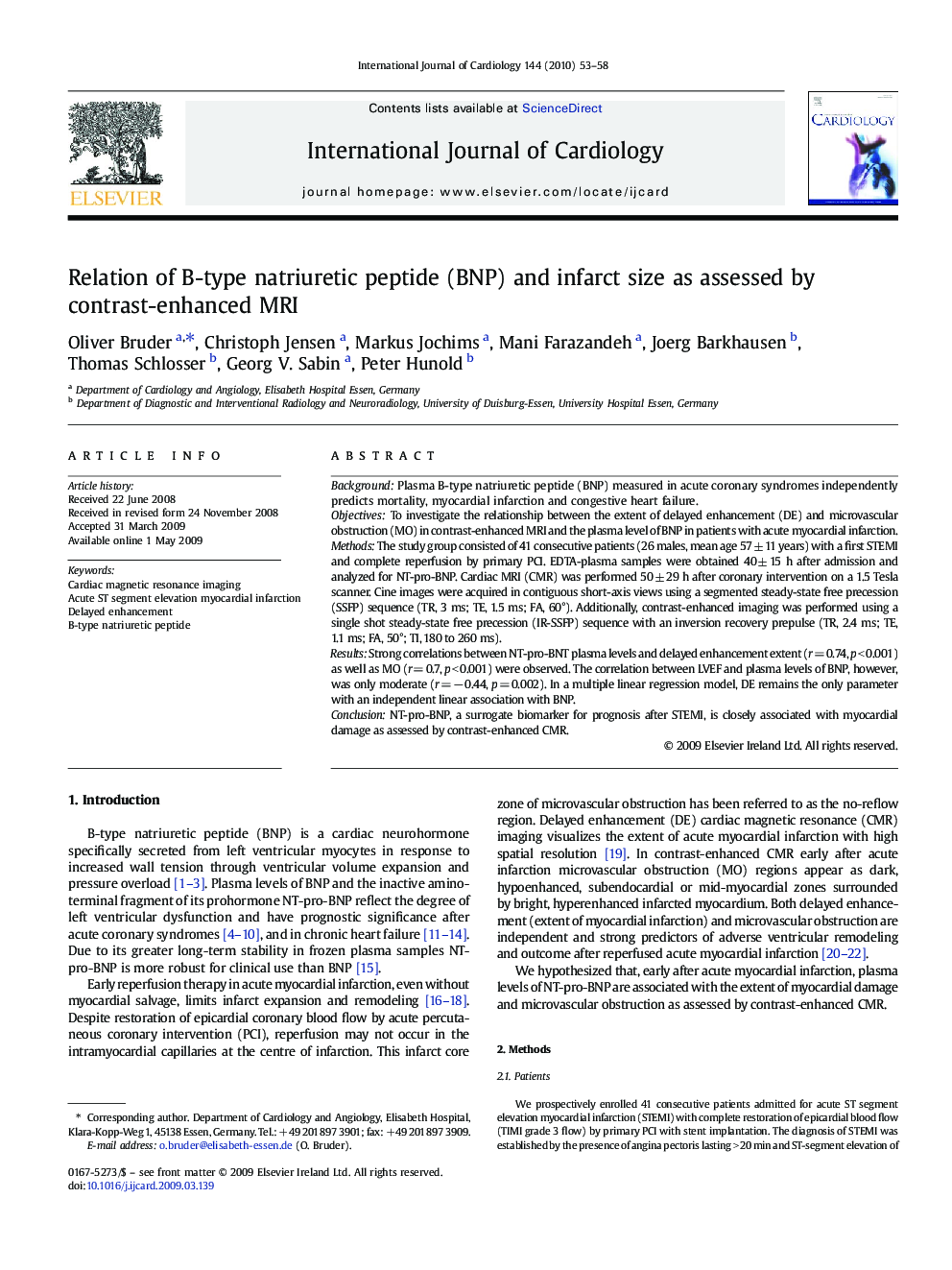| کد مقاله | کد نشریه | سال انتشار | مقاله انگلیسی | نسخه تمام متن |
|---|---|---|---|---|
| 5979428 | 1576293 | 2010 | 6 صفحه PDF | دانلود رایگان |

BackgroundPlasma B-type natriuretic peptide (BNP) measured in acute coronary syndromes independently predicts mortality, myocardial infarction and congestive heart failure.ObjectivesTo investigate the relationship between the extent of delayed enhancement (DE) and microvascular obstruction (MO) in contrast-enhanced MRI and the plasma level of BNP in patients with acute myocardial infarction.MethodsThe study group consisted of 41 consecutive patients (26 males, mean age 57 ± 11 years) with a first STEMI and complete reperfusion by primary PCI. EDTA-plasma samples were obtained 40 ± 15 h after admission and analyzed for NT-pro-BNP. Cardiac MRI (CMR) was performed 50 ± 29 h after coronary intervention on a 1.5 Tesla scanner. Cine images were acquired in contiguous short-axis views using a segmented steady-state free precession (SSFP) sequence (TR, 3 ms; TE, 1.5 ms; FA, 60°). Additionally, contrast-enhanced imaging was performed using a single shot steady-state free precession (IR-SSFP) sequence with an inversion recovery prepulse (TR, 2.4 ms; TE, 1.1 ms; FA, 50°; TI, 180 to 260 ms).ResultsStrong correlations between NT-pro-BNT plasma levels and delayed enhancement extent (r = 0.74, p < 0.001) as well as MO (r = 0.7, p < 0.001) were observed. The correlation between LVEF and plasma levels of BNP, however, was only moderate (r = â 0.44, p = 0.002). In a multiple linear regression model, DE remains the only parameter with an independent linear association with BNP.ConclusionNT-pro-BNP, a surrogate biomarker for prognosis after STEMI, is closely associated with myocardial damage as assessed by contrast-enhanced CMR.
Journal: International Journal of Cardiology - Volume 144, Issue 1, 24 September 2010, Pages 53-58